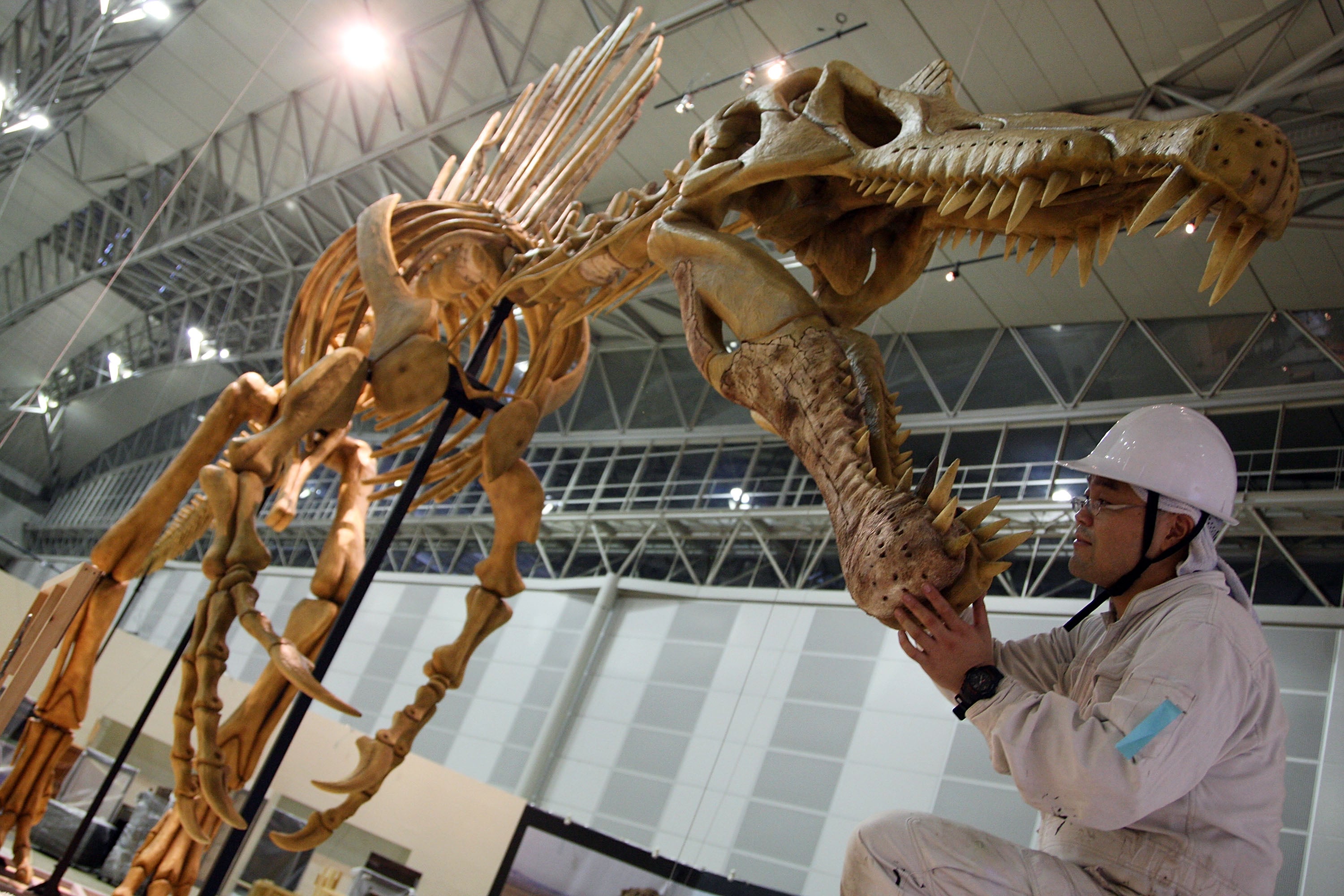Scientists recreate brain of largest carnivorous dinosaur with fossils
Model built from remains of newly-found fossil of ‘enormous river monster’ yields ‘surprising’ results
Scientists have recreated the brain of the largest carnivorous dinosaur ever known to have walked the Earth – using fossils discovered on the Isle of Wight and England’s south coast.
Spinosaurus – a giant of the Late Cretaceous period – is perhaps the largest predator to have ever lived, growing up to 50 feet (15 metres) in length and weighing as much as 20 tonnes.
Despite bearing a physical resemblance to the infamous Tyrannosaurus rex, the dinosaur has been described as “an enormous river-monster” which dominated the waterways of what is now north Africa.

Fossilised remains of the “water-loving” predator – thought to have able to swim fully submerged while hunting with huge bone-crushing jaws capable of snapping other dinosaurs in half – have also been discovered on the Isle of Wight in recent years.
Now, scientists at the University of Southampton have sought to digitally recreate the brain of a spinosaur, which was typically encased in a six-foot long skull.
In a bid to learn more about how these dinosaurs interacted with their environment, researchers scanned the remains of two of the oldest spinosaurs whose braincase material has been discovered – a Baryonyx from Surrey and Ceratosuchops from the Isle of Wight.
While the discovery of Ceratosuchops was announced only as recently as 2021, the scientists have already been able to reconstruct the creatures’ brains and inner ears, with “surprising” results given the manner in which they terrorised their prey some 125 million years ago.
Because soft organs, such as the brain, do not survive fossilisation, the team from Southampton and the University of Ohio used CT scans to peer into perfectly preserved cranial cavities, creating a 3D representation of the space, known as an endocast.

In findings due to be published in the Journal of Anatomy, the researchers discovered that spinosaurus’ olfactory bulbs – which process smells – weren’t particularly developed, while the ear was probably attuned to low-frequency sounds.
Those parts of the brain involved in keeping the head stable and the gaze fixed on prey were possibly less developed than they were in later, more specialised spinosaurs, they found.
“Despite their unusual ecology, it seems the brains and senses of these early spinosaurs retained many aspects in common with other large-bodied theropods – there is no evidence that their semi-aquatic lifestyles are reflected in the way their brains are organised,” said Chris Barker, a PhD student at Southampton, who led the study.
One interpretation of the evidence is that their theropod ancestors already possessed brains and sensory adaptations suited for part-time fish catching – meaning that spinosaurs needed only to evolve an unusual snout and teeth in order to become suited for a semi-aquatic existence.

“Because the skulls of all spinosaurs are so specialised for fish-catching, it’s surprising to see such ‘non-specialised’ brains,” said contributing author Dr Darren Naish.
“But the results are still significant. It’s exciting to get so much information on sensory abilities – on hearing, sense of smell, balance and so on – from British dinosaurs. Using cutting-edged technology, we basically obtained all the brain-related information we possibly could from these fossils,” Dr Naish said.
A model of the spinosaur brain is to be put on display alongside its bones at Dinosaur Isle Museum in Sandown, on the Isle of Wight.
“This new research is just the latest in what amounts to a revolution in palaeontology due to advances in CT-based imaging of fossils,” said co-author Lawrence M. Witmer, of Ohio University, who has been CT scanning dinosaurs, including Baryonyx, for a quarter of a century.
“We’re now in a position to be able to assess the cognitive and sensory capabilities of extinct animals and explore how the brain evolved in behaviourally extreme dinosaurs like spinosaurs.”
Dr Neil Gostling who leads the University of Southampton’s EvoPalaeoLab, said the new study “highlights the significant role British fossils have in our constantly evolving, fast-moving understanding of dinosaurs” and shows how the UK “is at the forefront of spinosaur research”.
“Spinosaurs themselves are one of the most controversial of all dinosaur groups, and this study is a valuable addition to ongoing discussions of their biology and evolution,” Dr Gostling added.




Join our commenting forum
Join thought-provoking conversations, follow other Independent readers and see their replies
Comments